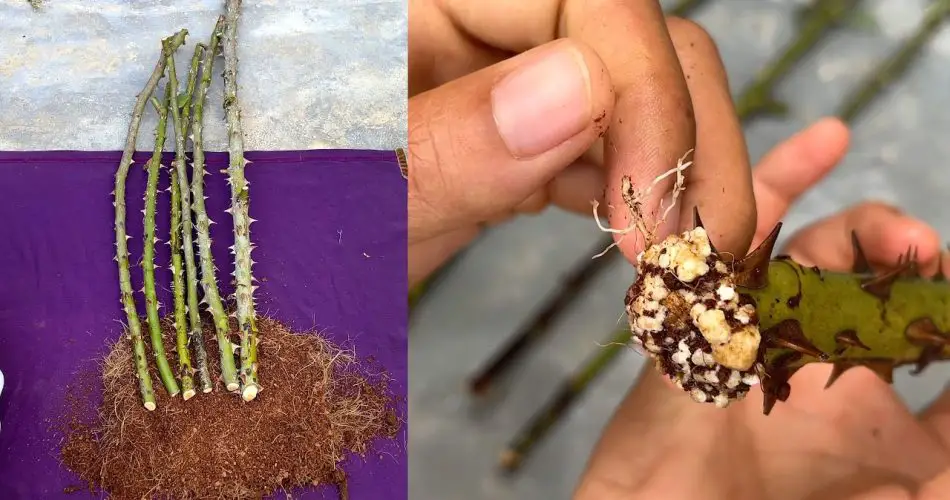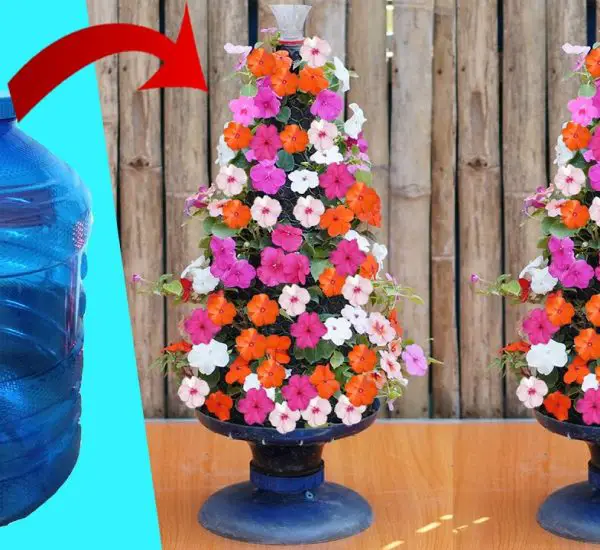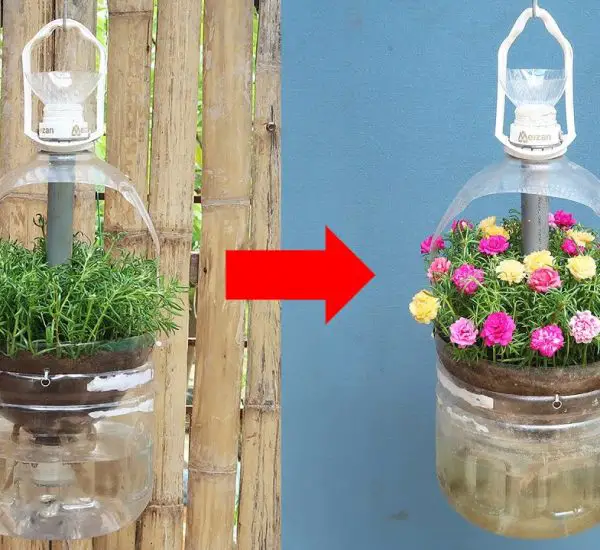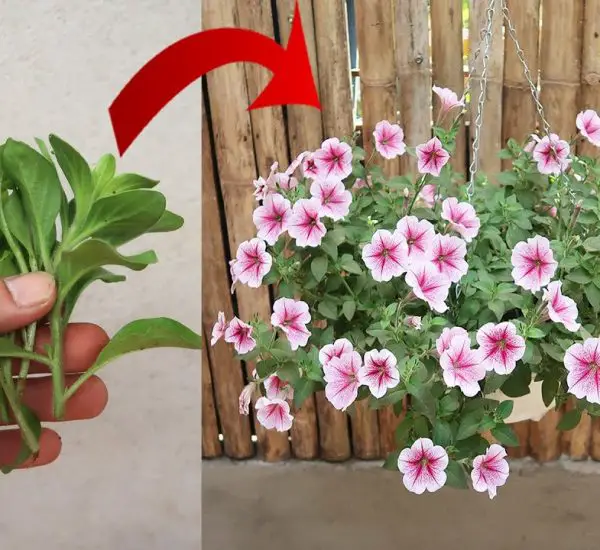Cutting roses from an existing plant and encouraging them to take root without soil is a great way to propagate new plants and expand your rose garden. This method, called rose propagation or cutting roses without soil, allows you to create new rose plants using healthy rose branches. Here’s a step-by-step guide on how to successfully cut roses and help the branch take root without needing soil.

Step 1: Choose the Right Rose Branch
When selecting a rose branch for propagation, it’s important to pick a healthy and strong stem. Look for a semi-hardwood cutting that is not too old but has begun to mature. The ideal cutting is around 6-8 inches long with at least two or three leaf nodes. These are the points where leaves grow along the stem. Make sure the cutting is free from diseases or pests, as this will increase the chances of successful rooting.
Step 2: Prepare the Rose Cutting
To prepare the cutting, use a sharp, sterilized knife or pruning shears to take the stem. Make a clean cut just below a leaf node, which is the point where roots are most likely to emerge. Remove any leaves from the bottom half of the cutting, as these can rot when placed in water and hinder the rooting process. Leave the top leaves intact to help the cutting stay healthy as it starts the rooting process.
Step 3: Use a Rooting Hormone (Optional)
While not strictly necessary, applying a rooting hormone to the cut end of the rose stem can help stimulate the formation of roots. You can find rooting hormone in garden centers or make your own using cinnamon or honey, which have natural antifungal properties that help prevent rot. Simply dip the cut end of the rose stem in the rooting hormone or natural alternative.
Step 4: Place the Cutting in Water
Next, place the rose cutting in a clear glass container filled with water. Make sure that the water covers the bottom part of the stem where the leaves were removed, but avoid submerging the leaves. You can also use a plastic bottle or jar to keep the cutting stable and prevent it from floating. Place the container in a location with indirect sunlight and keep the water level consistent, changing it every few days to prevent stagnation.
Step 5: Wait for Roots to Develop
Over the course of 2-4 weeks, the cutting should begin to develop roots. You’ll start to see small white roots emerging from the bottom of the stem. During this time, ensure the cutting is kept in a warm, humid environment. You can cover the container with a plastic bag or plastic wrap to create a mini greenhouse effect, which will help maintain humidity. However, make sure there is some airflow to prevent mold growth.
Step 6: Transplant the Cutting into Soil
Once the rose cutting has developed a strong network of roots (typically 1-2 inches long), it’s time to transplant it into soil. Prepare a small pot with well-draining potting soil that is rich in nutrients. Gently remove the cutting from the water and plant it in the soil, making sure the roots are well-spread and not bent or damaged. Water the plant thoroughly and place it in a bright spot with indirect sunlight while it acclimates to its new environment.
Step 7: Care for the New Rose Plant
After transplanting the cutting, continue to care for the rose plant as it grows. Keep the soil moist but not soggy, as overwatering can lead to root rot. Ensure the rose receives adequate sunlight, but avoid placing it in direct sunlight initially, as this can stress the young plant. As the rose grows, you can gradually increase its exposure to sunlight.
Step 8: Gradual Hardening Off
Once the new rose plant has grown sufficiently strong and healthy, begin the process of hardening it off. This means gradually acclimating it to outdoor conditions if you plan to plant it outside. Start by placing the plant in a shaded outdoor area for a few hours each day, increasing the exposure to sunlight and wind over a couple of weeks.
By following these steps, you can easily cut roses without soil and successfully help the rose branch take root. This method of propagating roses is a rewarding and cost-effective way to create new plants for your garden or home. Whether you’re looking to grow more roses or simply experiment with plant propagation, rooting rose cuttings without soil is a simple and effective technique.



